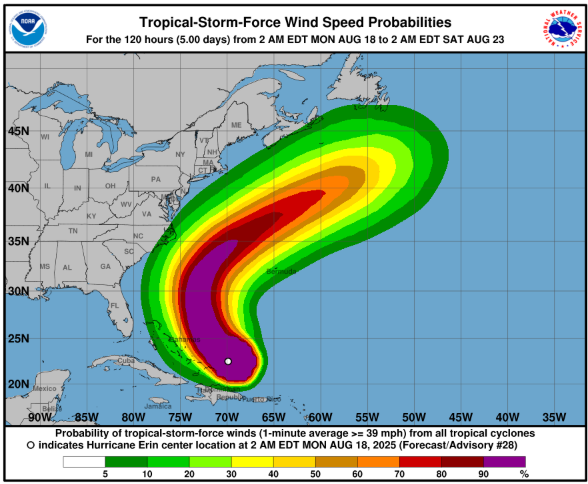- JD Solomon

- Aug 19

Hurricane season reminds me of the difficulty of facilitating technical forecasts of an uncertain future. In my world, it includes not only natural systems but also economic growth, consumer demand, human behavior, regulatory changes, and technology adoption. Developing useful predictions requires facilitators and participants to understand a handful of key concepts related to predictions, probability, and risks.
1. Predictions and Forecasts
Prediction and forecast are often used interchangeably, but they aren’t exactly the same.
A prediction is a statement about what will happen in the future, often based on intuition, expert judgment, or limited data.
Two examples of predictions are: “The Cincinnati Reds will win tonight’s game, or Hurricane Errin will strike the US East Coast.”
A forecast is a systematic, data-based estimate of what is likely to happen, often expressed with probabilities or ranges. It’s more analytical than a prediction and acknowledges uncertainty.
An example of a forecast is: “There’s a 65% chance the Reds will win tonight’s game, based on pitching matchups and recent performance.”
2. Frequencies and Forecasts
A frequency is simply how often something happens within a set of observations. It’s backward-looking because it comes from recorded past data.
An example of frequency is: “Out of 100 baseball games, the Reds won 55. The frequency of wins is 55/100, or 55%.
Forecasts are forward-looking. In forecasting, you usually start with base rates (historical frequencies). Then, you adjust them with new information, trends, or context.
An example of how frequencies (or base rates) are used is forecasting is: The Reds historically win 55% of games at home. For tonight, considering they’re facing an ace pitcher, the forecast drops to 45% win probability.
3. Probability and Subjective Probability
Probability is a way to quantify uncertainty about future outcomes. Probability is the measure of how likely an event is to happen. It’s expressed as a number between 0 and 1 (or 0% and 100%).
Like forecasts, probability is forward-looking. It’s a statement about how likely an event is to occur in the future. In practice, probability is an estimate informed by past frequencies, current information, and assumptions.
Probability is subjective because it reflects a person’s degree of belief in an outcome, given their knowledge and evidence. So subjective probability is a rational belief, but not one just based on historical frequencies.
4. All or Nothing with Hurricane Erin
Remember, probability is forward-looking. That means our forecasts reflect the chance we believe an event to occur. However, once an event passes, it either happened, or it did not (it's either 0 or 100%). The result is now part of the historical frequency.
5. Risk is in the Eye of the Beholder
Risk is the endgame of most predictions and forecasts. We want to look into an uncertain future and understand how circumstances will impact us. Risk is the deviation from expectations.
There is no risk if you have nothing to lose.
As a facilitator, remember that collaborators with skin in the game may provide different forecasts of an uncertain future than those that do. The quality of forecasts of an uncertain future often comes down to which data they use to form their opinions and the confidence they have in the underlying data.
Facilitating an Uncertain Future
Remember these five things when guiding a group of technical professionals to forecasts that are created, understood, and accepted by all. JD Solomon Inc. specializes in helping facility and infrastructure owners understand and allocate resources responsibly for big decisions related to an uncertain future.
JD Solomon Inc. provides solutions for program development, asset management, and facilitation at the nexus of facilities, infrastructure, and the environment. Visit our Facilitation page for more information related to all types of facilitation.


